Defense costs coverage is included under Section II—Liability Coverages in the HO-3 policy. This coverage
Select one:
A. Is excluded if the suit against the insured is groundless.
B. Has a liability limit separate from the personal liability limit.
C. Is included in the personal liability limit.
D. Is supplemental to the liability limit.
Correct. This Coverage is supplemental to the liability limit. (The insurer provides the defense costs in addition to any coverage for damages.)
All of the following are included as insureds for the Section II—Liability Coverages of a homeowners policy, EXCEPT:
Select one:
A. The 19-year-old exchange student who temporarily lives with and under the care of the named insured and his spouse
B. The homeowners association that sends a loss assessment bill to the named insured
C. The named insured’s 17-year-old foster child
D. The named insured’s neighbor while caring for the insured’s dog if the dog causes injury while in the neighbor’s care
Correct. All are insureds under the policy except for the homeowners association. The Loss Assessment additional coverage provides up to $1,000 for an insured’s share of a loss assessment charged to the insured by a corporation or association of property owners for certain types of losses, but the entity does not become an insured.
Under Coverage E—Personal Liability of the HO-3 policy, the insurer’s obligation to defend ends
Select one:
A. When the costs of defense limits are exhausted.
B. When the cost of defense exceeds the personal liability limits.
C. When the liability limit for the occurrence is exhausted by payment of a settlement or judgment.
D. When policy limits are exhausted by the claim expenses.
Correct. Under Coverage E—Personal Liability of the HO-3 policy, the insurer’s obligation to defend ends when the liability limit for the occurrence is exhausted by payment of a settlement or judgment.
All of the following are included as insureds for the Section II—Liability Coverages of a homeowners policy, EXCEPT:
Select one:
A. The named insured’s spouse who lives with the named insured but is away on business most Mondays through Fridays
B. The 19-year-old exchange student who temporarily lives with and under the care of the named insured and his spouse
C. The named insured’s 30-year-old best friend who is not related but becomes a temporary resident of the named insured’s household
D. The named insured’s neighbor while caring for the insured’s dog if the dog causes injury while in the neighbor’s care
Correct. All of the people identified in the answer choices are insureds under the policy except for the named insured’s best friend. He does not qualify as a relative or fall into any of the categories granting insured status to young people or students.
The HO-3 policy excludes coverage for liability assumed under contract or agreement. However, exceptions apply, provided the loss exposures do not involve coverage excluded elsewhere in the policy. Which one of the following describes an exception?
Select one:
A. Written contracts relating to the ownership of an insured location
B. First-party liability
C. Agreements intending to injure a third party
D. Liability assumed after an accident occurs
Correct. Written contracts relating to the ownership, maintenance, or use of an insured location are exceptions to this exclusion.
Which one of the following would be an exception to the Coverages E and F Business exclusion to the liability coverage provided by the HO-3 policy?
Select one:
A. Teenage son of named insured painting neighbor’s fence in exchange for a few dollars
B. Full-time landscaping business
C. Full-time beauty salon in the home
D. Charging neighborhood families for home daycare services
Correct. Teen painting neighbor’s fence. The Coverages E and F Business exclusion is designed to exclude coverage for bodily injury or property damage arising out of the business activities of any insured while providing coverage for occasional or part-time activities.
The HO-3 policy excludes liability coverage for
Select one:
A. Any motor vehicle that is rented to others.
B. A motorized golf cart owned by an insured and used on a golf course.
C. A motorized vehicle not requiring registration that is designed for recreational use off public roads and owned by an insured, and used on an insured location.
D. A motor vehicle in dead storage on an insured location.
Correct. Any motor vehicle that is rented to others would typically be insured under an auto liability policy.
Which one of the following statements is true regarding “aircraft liability” coverage under the HO-3 policy?
Select one:
A. If the insured flies her radio-controlled model airplane through a neighbor’s picture window, the resulting liability claim would not be covered.
B. Hobby aircraft that do not carry people or cargo are considered to be “aircraft” in the HO-3 policy.
C. Model airplanes that do not carry people or cargo are considered to be “aircraft” in the HO-3 policy.
D. The homeowners policy excludes all aircraft liability.
Correct. The homeowners policy excludes all aircraft liability. Model airplanes or hobby aircraft that do not carry people or cargo are excluded in the policy’s aircraft definition, however, and therefore are covered.
Under which one of the following conditions of a homeowners policy is each insured seeking protection treated as if he or she has separate liability coverage under the policy?
Select one:
A. Severability of Insurance condition
B. Singularity of Coverage condition
C. Limits of Liability condition
D. Voluntary Payment condition
Correct. Under the Severability of Insurance condition, each insured seeking protection is treated as if he or she has separate coverage under the policy.
The Section II Limit of Liability provision of the HO-3 policy stipulates that the limit of Coverage E—Personal Liability appearing on the declarations page is the total limit of coverage for
Select one:
A. Any one occurrence.
B. Each insured separately.
C. Each claim made relative to an occurrence.
D. Each person injured in a claim.
Correct. The Coverage E limit is the total limit of coverage for any one occurrence. This limit does not increase regardless of the number of insureds, claims made, or people injured.
The Section II Limit of Liability provision in the HO-3 policy states that for Coverage E, all bodily injury and property damage that result from continuous or repeated exposure to the same harmful conditions are considered
Select one:
A. Multiple occurrences, depending on how many events caused the bodily injury and property damage.
B. One occurrence, even if the occurrence that caused the bodily injury or property damage was not a single event.
C. Two occurrences, namely, the bodily injury and the property damage.
D. Three occurrences, namely, the bodily injury, the property damage, and the combination of bodily injury and property damage.
Correct. Even if the occurrence that caused the bodily injury or property damage was not a single event, but took place over many months, the injury or damage is considered one occurrence.
Under the cancellation condition in the HO-3 policy,
Select one:
A. Neither the policyholder nor the insurer can cancel the policy during the policy term.
B. The policyholder may cancel the policy for any reason but the insurer can cancel the policy only for certain reasons set forth in state regulations.
C. Either the policyholder or the insurer can cancel the policy for any reason.
D. The policy can only be cancelled by mutual consent of the insured and the insurer.
Correct. Under the cancellation condition in the HO-3 policy, the policyholder may cancel the policy for any reason but the insurer can cancel the policy only for certain reasons set forth in state regulations.
John has purchased a home but will not be able to move in until three months after he purchases it, and needs insurance coverage. Which endorsement for miscellaneous exposures would most appropriately apply in John’s situation?
Select one:
A. Personal Injury Coverage – Extends Coverage E – Personal Liability
B. Coverage B – Other Structures Away From the Residence Premises
C. Specific Structures Away Form the Residence Premises
D. Broadened Residence Premises Definition Endorsement
Correct. John will need the Broadened Residence Premises Definition Endorsement.
Unit-Owners Rental to Others may be used to extend coverage under which one of the following homeowners forms?
Select one:
A. HO-2
B. HO-3
C. HO-5
D. HO-6
Correct. Unit Owners Rental to Others extends Coverage C—Personal Property and Section II—Liability Coverages under HO-6 for the insured’s regular rental of an insured unit to others.
The Additional Insured—Vendors (HO 07 51) endorsement to a homeowners policy extends the definition of insured to include
Select one:
A. The property manager of the insured premises.
B. Independent contractors or agents named in the schedule.
C. Lessor(s) of the insured’s premises.
D. Mortgageholder(s) of the insured premises.
Correct. Additional Insured—Vendors extends the definition of insured to agents or independent contractors (called vendors) named in the schedule, but only with respect to bodily injury or property damage arising out of the insured’s products.
Which one of the following reinforces that homeowners property coverage does not apply to the personal property of home-sharing occupants, or any person occupying the residence because of home-sharing, kept in space rented to a home-sharing occupant, or used primarily for home-sharing host activities?
Select one:
A. Home-sharing Host Activities Amendatory Endorsement
B. Broadened Home-sharing Host Activities Coverage Endorsement
C. Home-sharing Host Activities Damage to Property of Others provision
D. Damage to Property of Others—Increased Limits endorsement
Correct. The Home-sharing Host Activities Amendatory Endorsement reinforces that homeowners property coverage does not apply to the personal property of home-sharing occupants, or any person occupying the residence because of home-sharing, kept in space rented to a home-sharing occupant, or used primarily for home-sharing host activities.
Bob and Diane Rothwell’s rural home is insured with an HO-3 policy. During spring clean up, the Rothwells hired a college student to help clean up and burn the brush that had accumulated over the prior season. As the brush pile was burning, an unexpected wind carried the fire across the Rothwells’ pasture. Bob and Diane, their 15-year-old son Jeff, Diane’s father who was visiting, the college student, and a neighbor all worked together to put out the fire before it spread to the neighbor’s yard. They all suffered some burns. All of the parties listed below will be able to collect compensation for their medical bills to treat their burns from the Medical Payments to Others coverage from the Rothwells’ HO-3, EXCEPT:
Select one:
A. The college student
B. Diane’s father
C. The neighbor
D. Jeff
Correct. Jeff’s medical bills will not be covered, because Jeff is an insured. Medical Payments to Others covers medical payments incurred by others, not insureds or regular household residents.
Josef left the garage door of his home open one night and a homeless person sneaked in and fell asleep. During the night, a shovel that was hanging on the wall fell down, hitting the person in the head, causing him to seek emergency medical treatment at a nearby hospital. Which one of the following statements is true about Josef’s coverage under his HO-3 policy?
Select one:
A. The injured person is entitled to benefits under Coverage F—Medical Payments to Others.
B. The injured person is entitled to benefits under Coverage F—Medical Payments to Others because there is no evidence that he caused the shovel to fall.
C. Coverage F—Medical Payments to Others is not available for persons on the insured location without permission.
D. Only Josef and his relatives are entitled to benefits under Coverage F—Medical Payments to Others.
Correct. Coverage F—Medical Payments to Others is not available for persons on the insured location without permission.
Juan lives on a large property insured with an HO-3 policy. His home is heated by fuel oil that is stored in an underground tank in his backyard. Juan did not realize that there has been a small leak in the tank and that for several years fuel has slowly trickled out of it, making its way into a neighbor’s well. The neighbor has made a claim against Juan, who turned the claim over to his insurer. Under Juan’s HO-3 policy, this is
Select one:
A. Not considered an occurrence because it did not cause bodily injury.
B. Considered an occurrence because it was a continuous condition and it was fortuitous.
C. Considered an occurrence because it destroyed tangible property.
D. Not considered an occurrence because it was not sudden.
Correct. An occurrence is an accident, and can be a sudden event, a gradual series of incidents, or a continuous condition, as long as it is fortuitous.
Dominic and Amy are a married couple who insure their home, which sits on a large property, with an HO-3 policy. It has a Coverage E—Personal Liability limit of $300,000. They were riding their snowmobiles on their own property when they saw a man crouching behind the shrubs, so they assumed he was a burglar. They drove their snowmobiles directly at the man, seriously injuring him. Then they discovered the man was a technician installing cable for their television. The cable technician sued Dominic and Amy and was awarded $300,000 against Dominic and $100,000 against Amy. The defense costs were $30,000. The court ruled that the insurer could not deny coverage for an intentional or expected injury because the couple was using force reasonably believed necessary to protect their home. As a result of the lawsuit, Dominic and Amy’s insurer will pay
Select one:
A. $0.
B. $300,000.
C. $330,000.
D. $400,000.
Correct. The insurer is responsible for the $300,000 Coverage E limit, plus defense costs of $30,000, for a total of $330,000. (The use of the snowmobile fits an exception to the Motor Vehicle Liability exclusion.)

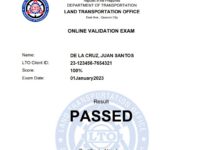

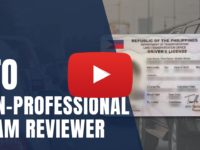


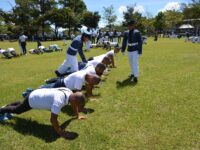
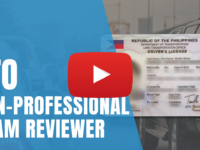
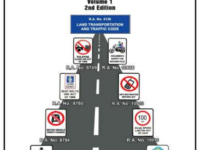
0 Comments